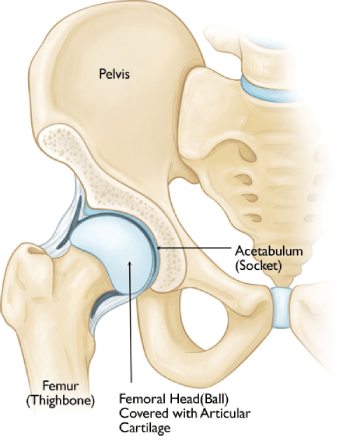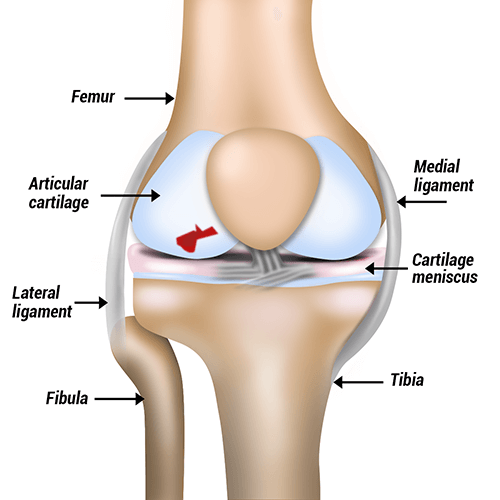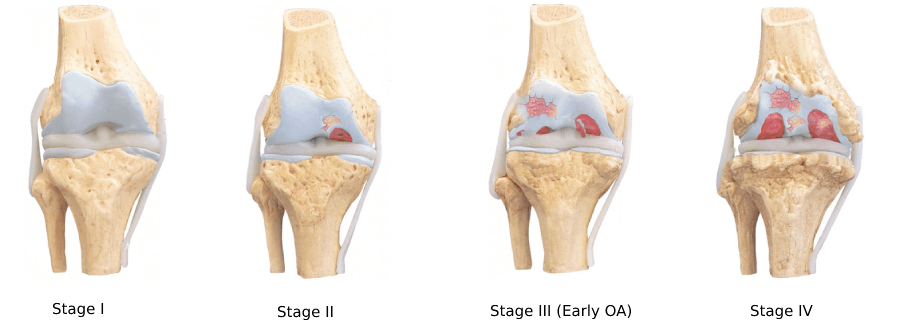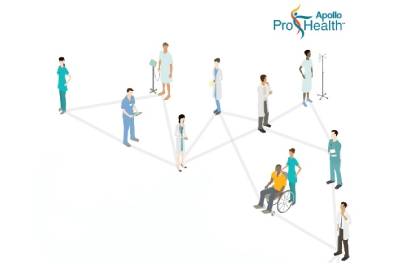
Avascular Necrosis and Bone Degeneration
If you are suffering from Avascular necrosis (AVN), you may have one or more of the following symptoms:
- Pain in your hip region, knee and groin
- Pain when you put weight in the affected joint
- Pain when lying down
- Limited movement with the affected joint
- Limp while walking

What happens when you have AVN?
AVN is a progressive bone condition caused by lack of blood supply to the bone tissue. Normally, blood vessels supply oxygen and nutrition to the bone.
- Blocked vessels hinder the blood supply and the bone tissue starts to decay.
- AVN mostly affects the hip joint (femoral head), although the knee, shoulder, ankle and other regions are also affected.
Stages of Avascular Necrosis of the Hip Joint

- Stages I and II of AVN are early stages and symptoms usually start from Stage II. It is important to diagnose and seek treatment for AVN AS EARLY AS POSSIBLE as it progresses very rapidly. AVN is reversible when appropriate treatment is sought in its early stages.
- In late stages III and IV, significant bone fractures and cartilage damage renders the joint non-functional. A stage IV AVN joint needs to be replaced by Total Hip Replacement surgery.
Cure AVN with Bone Cell Therapy
- Bone cell therapy consists of using the patients’ own cells (autologous) as a therapeutic tool to cure AVN
- More than 300 patients have been successfully treated with bone cell therapy with 80% success and a long-term follow-up of 10 years
Benefits
- Root cause of AVN tackled to stop disease progression
- Eliminates need for highly invasive Total Hip Replacement
- Natural treatment – uses patients’ own cells
Bone Cell Therapy – Treatment
- Bone marrow of the patient is extracted
- Healthy bone cells (osteoblasts) are isolated and cultured in the laboratory
- Cultured bone cells are implanted into the region of dead bone
Outcome of Bone Cell Therapy
- New healthy bone replaces lost bone tissue
- Progression of AVN is stopped
- Original hip joint preserved
- Patient can resume active normal life
- Patient is free of pain and disability
Cartilage Damage and Osteochondral Defects
If you are suffering from cartilage injuries, you may be having one or more of the following symptoms:
- Joint pain – at rest and when putting weight on the affected joint
- Swelling around the affected joint
- Joint stiffness
- Clicking or grinding sensation
- Joint locking or catching
What happens when you have Cartilage Damage?
Cartilage damage occurs due to excessive activity of joints, sports injury, accidents or trauma and even ageing. The most affected joint is the knee joint (picture), followed by shoulder, ankle, elbow and wrist.
- Injured cartilage does not heal itself as cartilage does not have blood supply.
- If left untreated, cartilage damage will worsen with time and lead to early onset of osteoarthritis (usually within 5-6 years after cartilage injury)

Stages of Cartilage Damage

- Stages I and II of cartilage damage are early stages. Once cartilage gets damaged, in its place fibrous cartilage (a very poor form of the actual cartilage – hyaline cartilage) is formed. Fibrous cartilage has very poor mechanical strength.
- Presence of fibrous cartilage makes the joint susceptible to further injuries and it becomes very difficult to carry out normal activities like walking, running, yoga and sports. Reduced physical activity will lead to diseases associated with sedentary lifestyle such as diabetes, obesity, hypertension and cardiovascular disorders.
- A stage IV arthritic joint needs to be replaced by Total Knee Replacement surgery.
Cure Cartilage injury with Cartilage Cell Therapy
- Cartilage does not have blood supply and will not heal on its own like a skin injury. Hence, cartilage damage needs to be treated by external intervention.
- Cartilage cell therapy consists of using the patients’ own cells (autologous) as a therapeutic tool to cure cartilage damage and osteochondral defects.
- More than 600 patients have been successfully treated with bone cell therapy with 90% success and long-term follow-up of 10 years
Benefits
- Eliminates need for Total Knee Replacement
- Natural treatment – uses patients’ own cells
- Minimally invasive arthroscopic procedure
Cartilage Cell therapy – Treatment
- Healthy cartilage is extracted from the patient
- Cartilage cells (chondrocytes) are cultured and expanded in the laboratory
- Cultured chondrocytes are then implanted into the region of cartilage damage
Outcome of Cartilage Cell Therapy
- New hyaline cartilage is regenerated at the defect sire
- Progression of cartilage damage is stopped
- Full range of motion of the joint is restored
- Original knee joint is preserved
- Patient is free of pain and disability
- Patient returns to active normal life and sports activities
Need Any Help?
Post A Query
[contact-form-7 id=”10404″ title=”Post A Query”]
UPDATED ON 28/03/2024
Apollo Highlights & Updates
 On World Health Day, Apollo Hospitals has unveiled the 4th edition of the Health of Nation report....
On World Health Day, Apollo Hospitals has unveiled the 4th edition of the Health of Nation report....05-04-2024
 Call Us Now
+91 8069991061
Book Health Check-up
Call Us Now
+91 8069991061
Book Health Check-up





